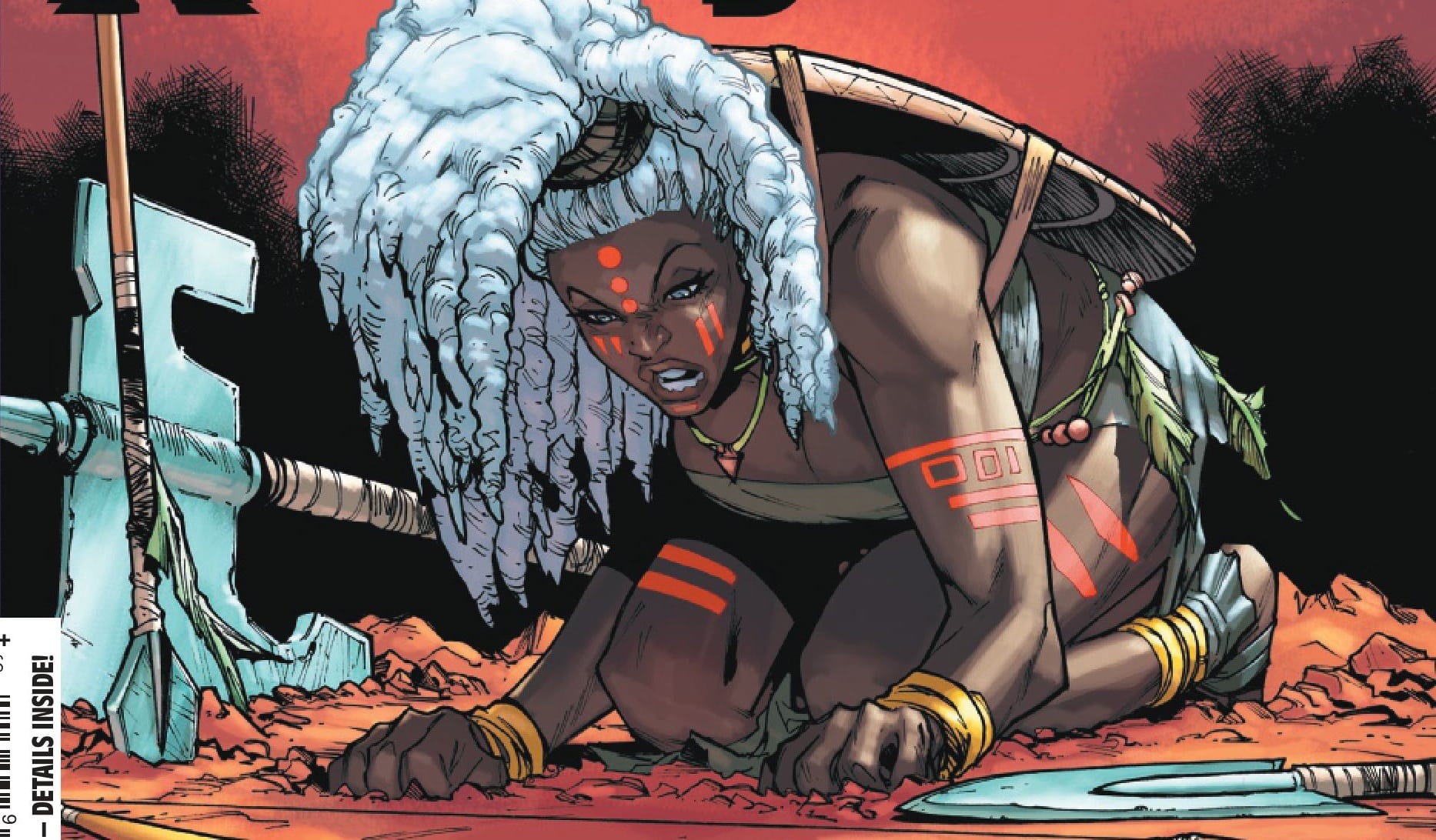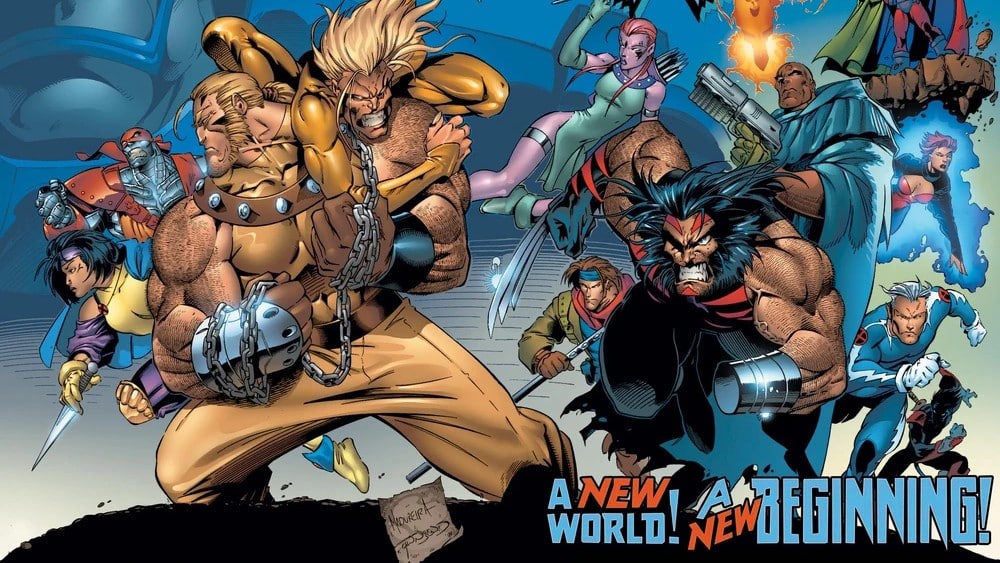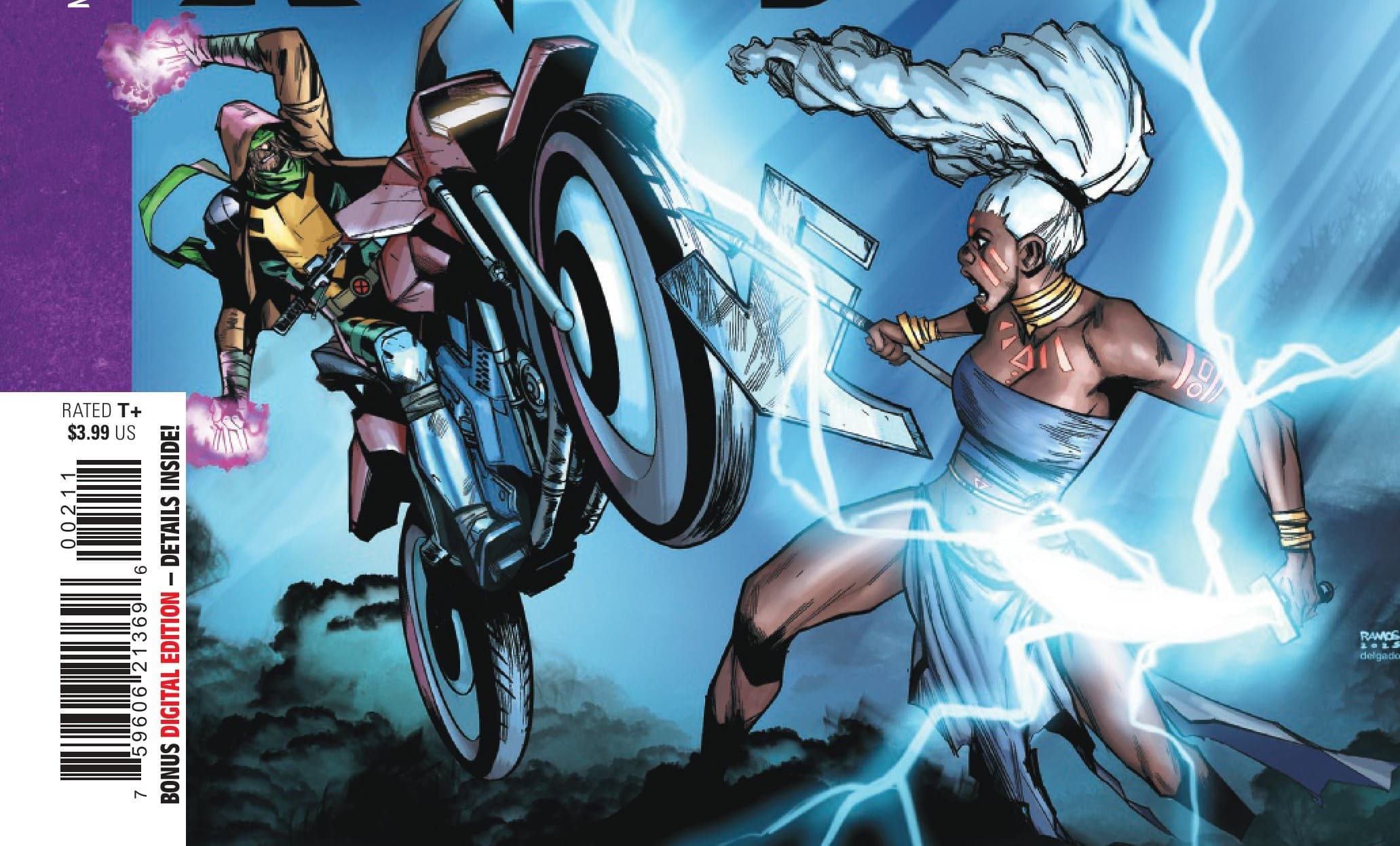THE ULTIMATE X-MEN GO BACK TO SCHOOL! It’s a new school year for Hisako as she tries to get a grasp on her powers. There, she meets a cool, white-haired punk girl named Mei (aka Maystorm), who understands all too well the challenge Hisako faces. They team up to embark on a creepy adventure to learn who is behind the creepy shadow that has been haunting – and taunting – them. Ultimate X-Men #2 is written and drawn by Peach Momoko with script adaptation by Zack Davisson and lettered by Travis Lanham.

Any revolution throughout history worth its salt has begun in a dimly lit tavern or a bustling factory before slowly building and proliferating through the hearts and minds of people the world over. Peach Momoko’s reimagining of the X-Men feels very much the same way; it’s intimate, personal, somewhat parochial, and just about familiar enough to feel like a mutant story, even if the word has not been used once in the 1610 universe.
The ‘one step at a time’ style of incremental storytelling that characterizes Momoko’s storytelling style has a naturally slower pace to it, focussing on character and theme over plot. These are both explored through incredible visual metaphors and horror tropes, which is spellbinding at times, but the series may need to scale up its scope for some readers to remain invested in Momoko’s world of magical realism. Issue 2 is effective in creating a sense of doubt and unease in what the reader is seeing, sowing the seeds for something that is both exciting and more familiar.
This issue doubles the size of our prospective mutant superhero team from one to two (steady on now), introducing Mei Igarashi (meaning “fifty storms”) aka Maystorm. Mei is an enthusiastic, eccentric and a little ingenuous girl who shows up seemingly out of nowhere to befriend Hisako. While seemingly innocent and naive, she fearlessly accompanies Hisako through her quest to discover the Yurei (ghost) ostensibly responsible for a spate of suicides in the town, all of whom are connected to and allegedly responsible for her friend Tsusaba’s death.
Creepy Cute

Ultimate X-Men 2 continues the Gurokawa (“creepy cute”) tone from the first issue, with Mei’s kawaii aesthetic juxtaposed with Hisako’s inner darkness and the very adult themes of depression and suicide. This is exhibited most prominently by the use of stuffed animals as a symbol of innocence, which highlights Mei as being conspicuously out of place in the story. Momoko introduces Mei accompanied by a stuffed animal that sings on its own, a symbol of the magic of youthful imagination. This illusion is quickly dispersed when Mei and Hisako encounter a damaged and warped stuffed animal on the floor of the old school followed by the deeply unsettling image of stuffed animals hung up and bleeding around a shrine. The stuffed animals represent the three bullies the ghost accuses of being complicit in Tsusaba’s death who, while being responsible for emotional anguish, were ultimately children.
It becomes apparent later in the issue that the notes representing the web of people responsible for Tsusaba’s death connect back to Hisako. The yurei appears to be placing responsibility for his death at her door as his closest friend, but the flashback scenes don’t suggest that she’s done anything particularly sinister. Along with the mystery man locked in the closet possibly swearing revenge on Hisako, this remains a potential mystery for another day.
What is apparent is the effect Hisako’s guilt has on her mental health, which Momoko explores beautifully through visual metaphor. As Hisako dreams about the moment that she misinterpreted Tsusaba’s signs of depression, tree roots representing guilt start to create cracks in her face before growing out of her skin and threatening to overwhelm her. Poisoning from within and growing outwards, it’s a clear countermeasure to Hisako’s armor, which protects her from the Yurei’s weaponizing depression against her. Using Tsusaba’s death as an example of humanity’s capacity for cruelty and lack of compassion, its goal is to use this pernicious energy against others. This hints at Momoko’s possible superhero mission statement: that Hisako’s newfound abilities can protect others, but she first must understand her interconnectedness to the world around her. In this sense it’s very much a coming of age story.
It’s clear, particularly when Hisako wakes from the dream with a note in her hand, that the lines between the physical and spiritual world are blurred in this story. At the very end of the previous issue, Hisako was stood by a torii, a gate thought in Japanese culture to separate realms which the Yurei has traveled through. The natural question to ask is: has anything or anyone else come through the gate?
Maystorms be brewing?

Maystorm’s sudden appearance in this story is conspicuous, and deliberately so on Momoko’s part. Firstly, she appears to materialize out of shadow as she introduces herself and immediately identifies Hisako as “That girl from the car wreck a few weeks ago”. Her desire to be Hisako’s friend is both immediate and overt, as is her habit of responding to every hint of negativity with positivity. The contrast between the two serves the story from both a functional and narrative point of view: where Hisako is shy and introspective, Mei is confident and outgoing, introducing some more snappy dialogue to handle exposition and move the plot along. Similarly with her power, Maystorm’s is offensive rather than defensive, which makes the superhero action sequences more dynamic and effective. The contrast, in fact, is so stark and so perfect, that you have to consider what else might be at play here.
Mei appears to be everything that Hisako is not and, given Hisako’s current mental state and the co-incidental nature of Mei’s arrival, everything she needs. She could conceivably be a spirit sent to guide her away from the dark and towards the light, a counterbalance full of life against the pervading death. This might explain why she’s not remotely phased by the terrifying plushie based ritual they encounter, or why she’s so comfortable using her power over the winds. However, somewhat frustratingly we know from creator interviews rather than the story itself that Maystorm is definitely a mutant, which kyboshes the spirit theory.
So, there are probably no cosmic designs that make her such a perfect companion for Hisako. But, her sudden appearance, plus her command over her powers, plus the elephant in the room of her character design being based on one of the most recognisable X-Men, would suggest that she’s no ordinary high-schooler. The prevailing theory has to be, therefore, that she has been sent by someone, possibly a mutant or mutants, to protect Armor. Mei calling Armor a “superhero” again can’t be a coincidence. Maybe we’re closer to a world of mutants than it appears at first glance.
As was discussed after the first issue, the series should not be judged on its connection to the X-Men at this early stage. At a time when the mutant franchise is reverting back to the status quo, unfamiliar, even uncomfortable, is good. There’s a big wide world out there though; we might need to see it eventually.
Ultimately superfluous thoughts

- It’s probably a good thing that Hisako never made it home with that bag of eggs. That was a dreary, dreary bag of eggs.
- There’s a moment when the spirit is attacking Hisako that she tries to pull an egg out of her plastic bag to throw at it. Which X-man would you most like to see egged? I personally would have had a baker’s dozen at the ready for Havok’s M-Day speech.
- Hisako complimenting something by describing it as “kinda punk rock” is, incidentally, exactly how I’d describe Maystorm. Strange right?
- Could Mei’s stuffed toy that can sing without batteries be the Ultimate Universe Dazzler?
Buy Ultimate X-Men #2 here. (Disclaimer: As an Amazon Associate, ComicsXF may earn from qualifying purchases.)
Armaan is obsessed with the way stories are told. From video games to theater, TTRPGs to comics, he has written for, and about, them all. He will not stop, actually; believe us, we've tried.






